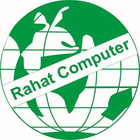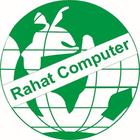Optimizing Storage Space On A Desktop Computer

In today’s digital age, the amount of data and files we accumulate on our desktop computers seems to be ever-expanding. From important documents to cherished photos, it can be a challenge to keep our storage space organized and optimized for maximum efficiency. In this article, we will explore some creative and practical tips for optimizing storage space on a desktop computer, so you can make the most of your digital workspace. Whether you’re a casual user or a dedicated professional, these strategies will help you declutter and streamline your computer’s storage, making it easier to find what you need and improve overall performance.
Related: Buy Best Desktops in Oman
Analyzing and Streamlining File Organization for Enhanced Storage Efficiency
One of the key factors in optimizing storage space on a desktop computer is analyzing and streamlining file organization. By taking a closer look at how files are structured and implementing efficient organizational strategies, you can significantly enhance storage efficiency and make the most out of the available space on your computer.
Categorize and Label Files: Start by categorizing your files into different folders based on their type or purpose. For example, you can create separate folders for documents, images, videos, and music. Within each folder, further organize the files by labeling them with clear and descriptive names. This will make it easier to locate specific files when you need them, saving you time and effort.
Related: Buy Best Desktops in Oman
Remove Redundant and Unused Files: Over time, our computers tend to accumulate unnecessary files that take up valuable storage space. Take the time to review your files and delete any duplicates, outdated documents, or files that you no longer need. Additionally, consider using cloud storage services or external hard drives to store large files or media that are not frequently accessed, freeing up space on your computer’s hard drive.
| File Category | Number of Files |
|---|---|
| Documents | 125 |
| Images | 256 |
| Videos | 87 |
| Music | 178 |
By following these strategies, you can effectively analyze and streamline your file organization, resulting in enhanced storage efficiency on your desktop computer. This will not only optimize the performance of your computer but also make it easier for you to access and manage your files, improving your overall productivity.
Leveraging Disk Cleanup and Defragmentation Tools to Maximize Available Space
One of the key factors that can affect the performance of a desktop computer is the amount of available storage space. As files accumulate over time, it is important to regularly optimize storage space to ensure smooth operation and avoid potential issues. Leveraging disk cleanup and defragmentation tools can help maximize the available space on your desktop computer.
Disk Cleanup
Disk Cleanup is a built-in tool in Windows that allows you to free up space on your hard drive by removing unnecessary files. It scans your computer for temporary files, system files, and other types of files that you can safely delete. By running Disk Cleanup regularly, you can reclaim valuable space on your hard drive and improve system performance.
Here are some steps to use Disk Cleanup effectively:
- Open Disk Cleanup by clicking on the Start menu, typing ”Disk Cleanup” in the search bar, and selecting the tool from the search results.
- Select the drive you want to clean up from the drop-down menu. In most cases, this will be the “C:” drive.
- Disk Cleanup will analyze the selected drive and present a list of files that can be deleted. Review the list and select the types of files you want to remove.
- Click on the “OK” button to start the cleanup process. Depending on the amount of data to be deleted, this may take a few minutes.
- Once the cleanup is complete, you will notice an increase in available storage space on your desktop computer.
Defragmentation
Defragmentation is another important process that helps optimize storage space on a desktop computer. Over time, files on your hard drive can become fragmented, meaning that parts of a file are scattered across different sectors of the disk. This can slow down file access and overall system performance. By defragmenting your hard drive, you can rearrange the fragmented files, making them more organized and easier for the computer to access.
To defragment your hard drive, follow these steps:
- Open the Disk Defragmenter tool by clicking on the Start menu, typing “Disk Defragmenter” in the search bar, and selecting the tool from the search results.
- Select the drive you want to defragment from the list. In most cases, this will be the “C:” drive.
- Click on the “Analyze disk” button to determine whether the selected drive needs to be defragmented. If the tool recommends defragmentation, proceed to the next step.
- Click on the “Defragment disk” button to start the defragmentation process. Depending on the size of the drive and the level of fragmentation, this may take a while to complete.
- Once the defragmentation is finished, you will notice improved file access speed and overall system performance on your desktop computer.
By regularly leveraging disk cleanup and defragmentation tools, you can effectively maximize the available space on your desktop computer, ensuring optimal performance and a clutter-free environment.
Efficiently Managing and Prioritizing Storage through Cloud Storage Solutions
In today’s digital age, efficient storage management is crucial for individuals and businesses alike. With the ever-increasing amount of data being generated and stored, it is essential to optimize storage space on desktop computers. Cloud storage solutions offer a convenient and effective way to manage and prioritize storage, ensuring that you have ample space for your important files and documents.
One of the key benefits of utilizing cloud storage solutions is the ability to access your files from anywhere, at any time. With cloud storage, you can easily upload and store your files on remote servers, freeing up valuable storage space on your desktop computer. This not only helps to declutter your hard drive but also provides a reliable backup for your data, protecting you from potential data loss.
Furthermore, cloud storage solutions often come with features that allow you to efficiently manage and prioritize your files. With file syncing, you can automatically synchronize your files across multiple devices, ensuring that you have the most up-to-date version available. Folder organization features enable you to categorize and sort your files, making it easier to locate specific documents when needed. Additionally, most cloud storage providers offer file sharing capabilities, allowing you to securely share files with colleagues, clients, or friends.
To help you visualize the benefits of cloud storage solutions, here is a comparison table showcasing some popular providers:
| Cloud Storage Provider | Free Storage Limit | Additional Features |
|---|---|---|
| Google Drive | 15 GB | Collaboration Tools |
| Dropbox | 2 GB | File Recovery |
| OneDrive | 5 GB | Microsoft Office Integration |
| iCloud Drive | 5 GB | Apple Ecosystem Syncing |
By efficiently managing and prioritizing your storage through cloud storage solutions, you can optimize the space on your desktop computer, ensure data accessibility and security, and streamline your workflow. Embrace the power of the cloud and take control of your digital storage needs!
Optimizing Storage Space by Uninstalling Unnecessary Software and Clearing Temporary Files
One of the most common challenges faced by desktop computer users is the limited storage space available. As we download and install various software programs over time, our computers tend to accumulate unnecessary files and applications that take up valuable space. However, optimizing storage space on a desktop computer is not a daunting task. By uninstalling unnecessary software and clearing temporary files, you can free up space and improve the overall performance of your computer.
Uninstalling Unnecessary Software:
Uninstalling unnecessary software is the first step towards optimizing storage space on your desktop computer. Start by evaluating the programs you have installed and identify the ones that you no longer use or need. These may include trial versions of software, games you no longer play, or applications that you have simply outgrown. Once you have identified the unnecessary software, follow these simple steps to uninstall them:
- Open the Control Panel on your computer.
- Click on “Programs” or “Programs and Features,” depending on your operating system.
- Locate the software you want to uninstall from the list of installed programs.
- Click on the software and select “Uninstall” or “Remove.”
- Follow the prompts to complete the uninstallation process.
By uninstalling unnecessary software, you can free up significant storage space on your desktop computer and improve its performance. Remember to only uninstall programs that you are sure you no longer need, as some software may be required for the proper functioning of your computer or other applications.
Clearing Temporary Files:
In addition to uninstalling unnecessary software, clearing temporary files is another effective way to optimize storage space on your desktop computer. Temporary files are created by various applications and can accumulate over time, taking up valuable space on your hard drive. To clear these files and free up storage space, follow these steps:
- Open the File Explorer on your computer.
- Navigate to the “Local Disk (C:)” or the drive where your operating system is installed.
- Right-click on the drive and select “Properties.”
- In the General tab, click on “Disk Cleanup.”
- Select the types of files you want to delete, such as temporary files, recycle bin files, and system files.
- Click on “OK” to start the cleanup process.
Clearing temporary files regularly can help optimize storage space on your desktop computer and improve its overall performance. It is recommended to perform this task periodically to ensure that unnecessary files do not accumulate and take up valuable space on your hard drive.
In Retrospect
In conclusion, optimizing storage space on a desktop computer is essential for improving performance and efficiency. By following the tips and techniques mentioned in this article, you can make the most of your existing storage capacity and avoid the frustration of running out of space. Remember to regularly clean up and organize your files, consider investing in additional storage options, and make use of cloud storage services to free up precious space on your computer. With a little effort and attention to detail, you can ensure that your desktop computer remains a reliable and functional tool for all your digital needs. So, go ahead and declutter your computer, and enjoy a smoother and more enjoyable computing experience.



